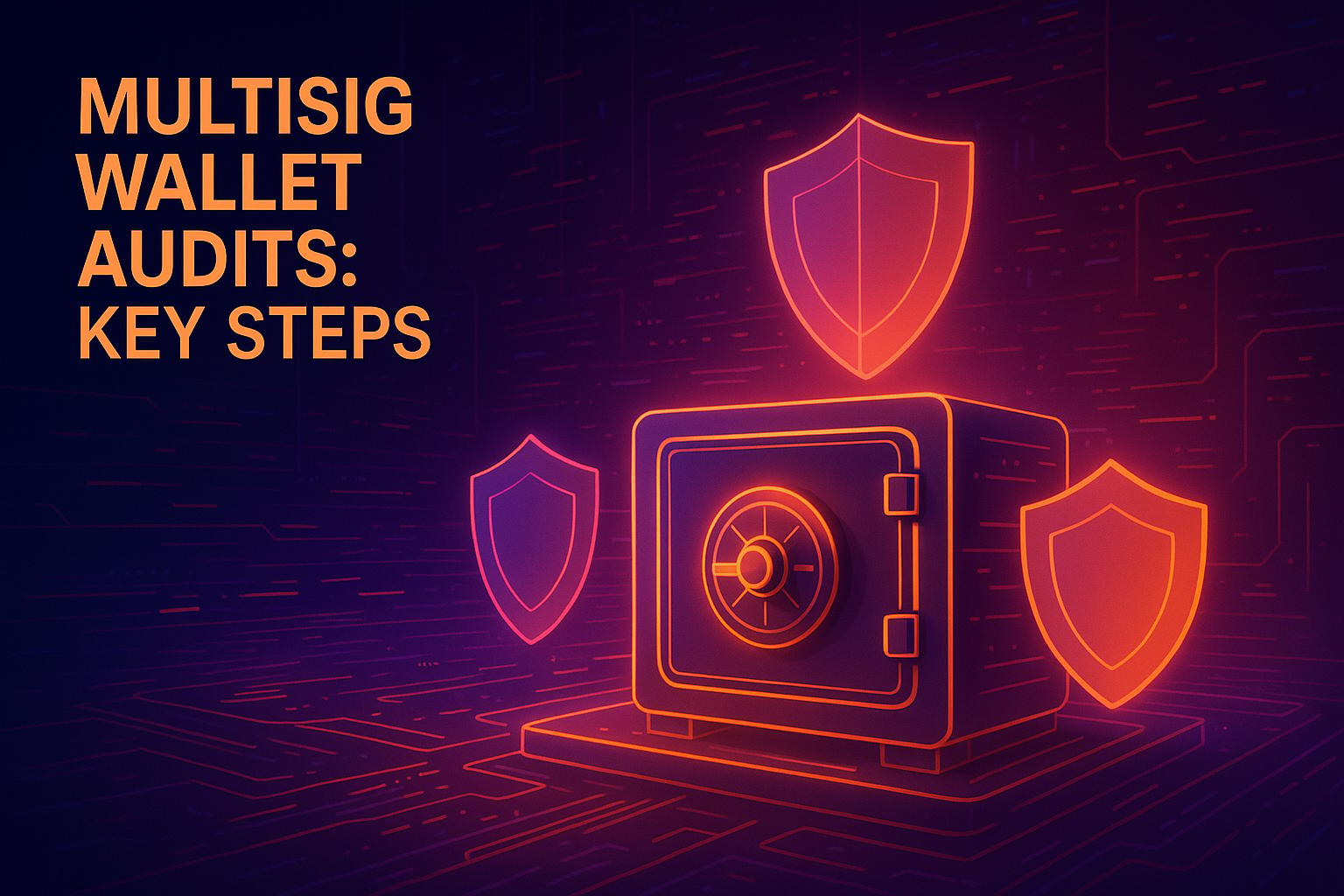ECDSA and Schnorr are two cryptographic algorithms used in Bitcoin multisignature (multisig) wallets, each offering distinct advantages and trade-offs.
Here’s a quick breakdown:
-
ECDSA (Elliptic Curve Digital Signature Algorithm):
- Has been Bitcoin’s standard since 2009.
- Proven security and regulatory acceptance.
- Multisig transactions are identifiable on the blockchain.
- Larger transaction sizes and higher fees due to lack of signature aggregation.
-
Schnorr Signatures:
- Introduced with Bitcoin’s Taproot upgrade in 2021.
- Allows signature aggregation, reducing transaction size and fees.
- Multisig transactions appear identical to single-signature ones, improving privacy.
- Resistant to transaction malleability, enhancing security.
- Easier to implement advanced multisig features like threshold signatures.
Which should you choose?
- Use ECDSA if you rely on legacy systems or require established regulatory compatibility.
- Opt for Schnorr if you prioritize lower fees, privacy, and advanced security features.
Quick Comparison
| Feature | ECDSA | Schnorr |
|---|---|---|
| Signature Size | Larger, higher fees | Smaller, lower fees |
| Privacy | Multisig is visible | Multisig is hidden |
| Malleability | Susceptible | Resistant |
| Aggregation | Not supported | Supported |
| Batch Verification | Not supported | Supported |
| Implementation | Complex for advanced use | Simpler for advanced use |
Bottom Line: Schnorr offers clear advantages for modern multisig wallets, especially for privacy and cost efficiency, while ECDSA remains a reliable choice for legacy setups.
ECDSA in Multisignature Wallets
ECDSA Overview
ECDSA has been the backbone of Bitcoin's security since its launch in 2009. It relies on the secp256k1 elliptic curve to create compact and unique transaction signatures. These signatures allow users to prove ownership of their funds without revealing their private keys. The choice of this curve is no accident - it offers a balance of strong security and efficient computation. Let’s dive into how ECDSA operates within multisignature (multisig) wallets.
How ECDSA Works in Multisig
In a multisig wallet, every participant generates their own ECDSA signature. These individual signatures are then combined and included in the transaction. Take a 2-of-3 multisig setup as an example: two separate signatures are required, each taking up about 70–72 bytes, along with extra data to define the multisig conditions.
For the transaction to be valid, the network verifies each signature. This involves confirming that the signature matches one of the authorized public keys and ensuring the mathematical link between the signature and the transaction data checks out. These steps highlight how ECDSA functions in multisig setups and set the stage for a closer look at its strengths and challenges.
ECDSA Strengths and Limitations
ECDSA brings both reliability and challenges to multisig wallets. On the plus side, its long history - spanning more than 14 years - has proven its security. It’s also backed by clear U.S. regulatory standards, making it a trusted choice for multisig implementations. However, it’s not without drawbacks.
One noticeable issue is that ECDSA signatures are easily identifiable on the blockchain. They can’t be aggregated, which means transactions involving multiple signatures take up more space. This increases transaction fees, especially during periods of high network activity. Additionally, the visibility of these signatures can expose transaction patterns, potentially making users with multisig setups more noticeable to observers.
These inefficiencies become more pronounced as the number of required signatures grows, making them a concern for advanced multisig setups or scenarios needing several approvals. Even so, ECDSA remains a go-to option for those who value its proven security and regulatory clarity. Many Bitcoin services and institutional custodians continue to rely on ECDSA multisig as a cornerstone of their security systems.
Schnorr Signatures in Multisignature Wallets
Schnorr Signatures Overview
Schnorr signatures, introduced with Bitcoin's Taproot upgrade in November 2021, bring a fresh approach to multisignature (multisig) wallets by addressing the limitations of ECDSA. Their linear structure unlocks capabilities that ECDSA cannot support, particularly in simplifying and streamlining multisig operations.
Here’s the game-changer: Schnorr signatures allow multiple signatures to be aggregated into one. Instead of verifying each signature individually, this method produces a single signature that looks just like a standard one. Even better, Schnorr uses the same secp256k1 elliptic curve as ECDSA, ensuring it works seamlessly with Bitcoin's current framework while enabling more advanced cryptographic techniques. Let’s explore how these features translate into real-world benefits for multisig wallets.
Key Features: Aggregation and Privacy
One standout feature of Schnorr signatures is key aggregation. This process combines multiple public keys into a single aggregate key. On the blockchain, this means a multisig transaction can look identical to a regular single-signature transaction, offering a significant boost in privacy.
Beyond privacy, aggregation also reduces data size. Instead of storing multiple signatures, a single aggregated signature - just 64 bytes - is recorded, which means lower transaction fees. Additionally, because these aggregated signatures are indistinguishable from standard ones, they make it harder for blockchain analysts to identify or target multisig users.
Schnorr Security Benefits
From a security perspective, Schnorr signatures are built on solid cryptographic foundations. Breaking one would require solving the discrete logarithm problem, a task considered computationally infeasible. This provides strong theoretical assurances of their security.
Another major advantage is Schnorr's resistance to transaction malleability. Unlike ECDSA, where signatures can be slightly altered to change a transaction’s ID, Schnorr signatures invalidate any such modifications, closing off a common attack vector.
Schnorr’s linear design also enables advanced techniques like threshold signatures and distributed key generation. These methods allow multiple parties to collectively generate keys without any single participant holding the entire private key, making multisig setups more secure and collaborative.
Lastly, Schnorr supports batch verification, which allows multiple signatures to be verified at once. This is particularly useful during periods of high transaction activity, as it significantly improves computational efficiency.
With these capabilities, Schnorr signatures bring a mix of stronger security, better privacy, and greater efficiency to multisig wallets, paving the way for more robust and user-friendly implementations.
ECDSA vs. Schnorr for Multisig Security
Feature Comparison Table
When deciding between ECDSA and Schnorr for multisig wallets, it’s crucial to understand how these cryptographic methods differ. Here’s a side-by-side look at their key features:
| Feature | ECDSA | Schnorr |
|---|---|---|
| Signature Size | Larger signatures, leading to higher transaction costs | Smaller signatures, reducing fees and saving block space |
| Privacy | Multisig transactions are easily identifiable | Multisig transactions blend with single-signature ones for better privacy |
| Malleability Resistance | Susceptible to signature alterations | Fully resistant, preventing changes to transaction IDs |
| Compliance | Widely accepted by existing regulatory frameworks | A newer standard, gradually gaining adoption |
| Implementation Complexity | Well-established but involves more intricate calculations | Simpler structure, easier to implement correctly |
| Signature Aggregation | Not natively supported | Combines multiple signatures into one for efficiency |
| Batch Verification | Requires individual verification for each signature | Allows simultaneous verification of multiple signatures |
| Threshold Signatures | Less efficient for implementation | Optimized for t-out-of-n schemes, improving performance |
Schnorr brings modern security benefits while improving efficiency, particularly through features like signature aggregation, which helps lower Bitcoin transaction fees. These differences play a key role in choosing the right cryptographic solution depending on specific operational needs.
When to Choose ECDSA or Schnorr
The choice between ECDSA and Schnorr often comes down to legacy system compatibility versus advanced transaction features. While ECDSA has been the go-to standard for years, Schnorr offers a forward-looking solution with notable improvements in privacy and efficiency.
ECDSA is a better fit for organizations relying on legacy infrastructure or operating under strict regulatory requirements. Its long-standing track record and compatibility with older systems make it a practical choice for entities that need to maintain existing workflows or work with platforms that haven’t yet adopted Schnorr.
On the other hand, Schnorr is ideal for those prioritizing efficiency, privacy, and advanced multisig functionalities. By enabling signature aggregation, Schnorr makes multisig transactions indistinguishable from standard Bitcoin payments. This added privacy is particularly valuable for high-value wallets or businesses aiming to keep their multisig arrangements confidential.
For example, BitVault - a non-custodial, open-source Bitcoin wallet - utilizes Schnorr signatures to enhance both security and privacy. With features like aggregated signatures, time-delayed transactions, and secret notifications, BitVault ensures seamless compatibility with Bitcoin Layer 2 solutions like Liquid and the Lightning Network.
Schnorr also lowers transaction fees and supports scalable multisig protocols, such as batch verification and efficient threshold signatures. These capabilities not only reduce costs but also improve network performance during periods of high activity.
From a developer’s perspective, Schnorr’s linear design and straightforward serialization simplify coding, reducing the likelihood of errors in modern multisig implementations.
sbb-itb-c977069
Wallet Implementation Considerations
Risk Mitigation and Regulatory Compliance
When choosing a cryptographic algorithm for multisig wallets, there's a delicate balance between meeting security demands and adhering to compliance standards. Historically, ECDSA has been the go-to option, satisfying regulatory expectations. However, the emergence of Schnorr signatures offers a new approach with added benefits. Schnorr enables signature aggregation, which combines multiple signatures into one and hides the multisig structure on-chain.
For high-value Bitcoin storage, a thorough risk assessment is non-negotiable. ECDSA-based setups often require spreading key management across several devices and locations, which can increase complexity. Schnorr's signature aggregation, on the other hand, simplifies the verification process and lowers the chances of key management errors. Additionally, ECDSA transactions reveal the wallet's multisig structure on the blockchain, potentially exposing security details to attackers. Schnorr signatures address this by concealing the underlying multisig setup, adding a layer of security. These advancements are shaping modern wallet designs, as seen in platforms like BitVault.
Implementing Schnorr with BitVault

BitVault exemplifies how wallets can adopt Schnorr signatures to enhance security while maintaining ease of use. By combining Schnorr-based multisig with time-delayed transactions, BitVault creates a multi-layered defense against potential threats. It employs AES 256-bit encryption alongside Schnorr signatures to safeguard sensitive information, while the time-delay feature introduces a buffer period to detect and respond to suspicious activity.
BitVault also integrates seamlessly with Bitcoin Layer 2 solutions, such as the Lightning Network and Liquid sidechain. Its L1 fee optimization feature ensures efficient fund transfers between layers. Additionally, BitVault's secret notification system sends encrypted alerts in the event of unauthorized access, all while keeping the multisig structure hidden from prying eyes.
The wallet's design has been rigorously tested and validated, earning the CISA+ security certification. By incorporating features like hardware security modules and secure key derivation protocols, BitVault demonstrates that a well-executed Schnorr-based multisig system can meet stringent security benchmarks. These innovations are paving the way for even more secure and user-friendly wallet solutions.
Future Trends in Multisig Cryptography
The future of multisig cryptography is promising, with advancements building on the foundation laid by Schnorr signatures. Emerging developments are expected to enhance privacy, simplify the implementation process, and lower transaction costs. As the industry evolves, new techniques and standards could enable smoother multi-party signature schemes and better interoperability across blockchain networks. These improvements will give organizations greater flexibility and stronger security for managing Bitcoin assets.
Conclusion
Key Takeaways from the Comparison
Deciding between ECDSA and Schnorr signatures ultimately depends on what matters most to you: security, privacy, or regulatory compliance. ECDSA has stood the test of time, offering dependable security and aligning with many regulatory requirements, making it a solid choice for Bitcoin transactions. On the other hand, Schnorr signatures bring a new level of sophistication to multisig cryptography. By enabling signature aggregation, Schnorr reduces transaction sizes and fees while masking the multisig structure, which adds an extra layer of privacy. This concealment can discourage attackers from targeting high-value wallets or attempting to analyze their security configurations.
Multisig Wallet Security Recommendations
For users handling large Bitcoin holdings, Schnorr-based multisig wallets are a compelling option. Their ability to hide the multisig setup and combine signatures not only improves privacy but also reduces transaction costs and minimizes the risk of key management errors. A great example is BitVault, which takes this a step further with features like time-delayed transactions, AES 256-bit encryption, and secret notifications. Its CISA+ security certification demonstrates that a well-executed Schnorr-based solution can meet stringent security standards. Additionally, integrating with Bitcoin Layer 2 solutions, such as the Lightning Network or Liquid sidechain, provides even more flexibility and security for managing funds across different layers.
Schnorr Signatures and Key Aggregation (MuSig)
FAQs
What benefits do Schnorr signatures offer over ECDSA for multisignature wallets?
Schnorr signatures bring several advantages to the table when compared to ECDSA, especially for multisignature wallets. One standout feature is signature aggregation, which allows multiple signatures to be combined into a single one. This significantly reduces the transaction size, cutting down on fees and boosting overall efficiency.
Another important benefit is improved privacy. Schnorr signatures can hide the number of participants in a transaction, making it harder to trace or analyze. They also provide stronger security measures, including protection against signature malleability, which helps guard against certain types of attacks. These qualities make Schnorr signatures an excellent choice for multisig wallets, offering better scalability, security, and privacy.
How does Schnorr signature aggregation improve privacy and lower transaction fees?
Schnorr signature aggregation enhances privacy by making multi-signature transactions look just like single-signature ones. This makes it much tougher for outsiders to identify or differentiate transaction types, giving users an added layer of confidentiality.
On top of that, Schnorr combines multiple signatures into one, which reduces the data stored on the blockchain. Smaller transaction sizes mean lower fees and a boost in the network's overall efficiency.
What factors should organizations consider when choosing between ECDSA and Schnorr signatures for security and compliance?
When choosing between ECDSA and Schnorr signatures, it's important to weigh both security needs and regulatory demands. Schnorr signatures stand out for their smaller signature sizes and straightforward security guarantees. These qualities not only make them more efficient but also simplify the auditing process, which can help organizations navigate compliance requirements and minimize risks tied to cryptographic flaws.
On the other hand, ECDSA remains widely used and well-supported. However, it comes with certain drawbacks, such as signature malleability and more intricate security proofs. These limitations might necessitate extra measures to meet stringent compliance criteria. For organizations that value easier auditing and stronger security, Schnorr signatures are often the preferred option, especially as the shift toward modern cryptographic practices gains momentum.




